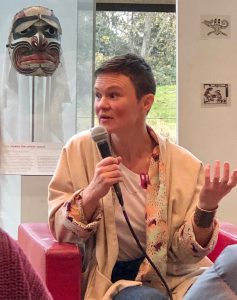
This is the fourth and last blog about ‘Catching Fire: Artists in Conversation’. I have used the talking trios as a way of showing photos of work by each of the eleven artists featured in the big ‘Playing with Fire: Ceramics of the Extraordinary’ show which opened at the Museum of Anthropology last Thursday.
This final conversation was hosted by Alwyn O’Brien (you’ll see that she changed her jacket for the different role after being an interviewed artist a few minutes before). Her guests were Ian Johnston and Jeremy Hatch and the word(s) assigned for their talk was MASS CONSUMPTION. As with the artists interviewed before them, these two artists took the opportunity to give us an overview of their careers and a look at the focus of their work now. Ian started out with the intention of studying architecture but has turned his attention to clay work. His initial interest shows in the way he has created the eerie space in the gallery. The walls are covered with paper-thin sheets of porcelain that cling to now-absent forms. These are twentieth century design products – light bulbs, an antique telephone, a kettle. The method of suctioning the porcelain clay slabs down over the forms is extraordinarily time-consuming but Ian was thinking about sustainability and having us consider our incessant use of objects. Click on his text to learn more.
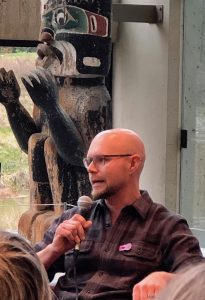
Jeremy Hatch teaches at a University in Montana now but is from BC. His remarkable porcelain Tree-House faithfully replicates real wood, both in the tree and in the simple building planks nailed up there. This piece is meant to be a non-functional sculpture but he wanted us to know that he also makes pieces for sale (some in the MOA gift shop in fact). All are made with moulds so design rather than the human touch of a wheel-thrower is his choice. Alwyn asked about the use of fuel for the firing of their work and Jeremy insisted that one porcelain tree-house is a tiny environmental problem compared to the millions of ceramic pieces being produced in China every day.
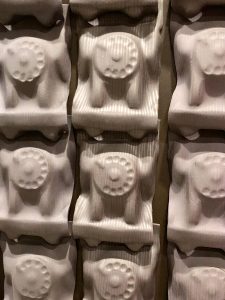
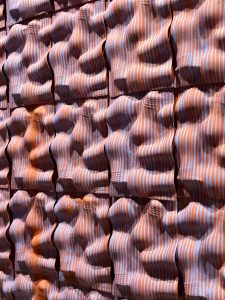
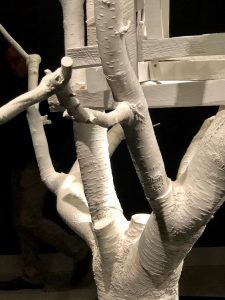
I enjoyed all four of these conversations. The questions asked always brought out more details about the work being made, how and why, and anecdotes about choosing a life as a clay artist. Although my notes are minimal I do like to hear from artists and actually put a face to them. Hence the individual photos of each speaker. I hope that this, plus a few images of their work will encourage you to follow their careers and perhaps make the trek out to UBC to see this show and the rest of the museum, especially the Koerner Gallery of Ceramics.
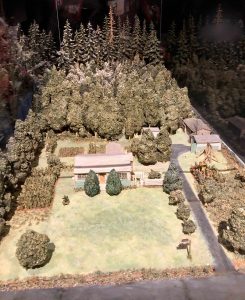
The only remaining artist to mention is Bill Rennie. A well-known Vancouver clay artist, Bill died just a couple of years ago but he has left a legacy of his ornate towers. Along with those there is a nostalgic replica from memory of his rural Surrey homestead. The little house and its large yard, backed by a mini-forest have all disappeared now, replaced by houses for the fast-expanding City of Surrey. It’s astonishing to realise that the tiniest details of the house, barn, fences and trees are all made of clay.
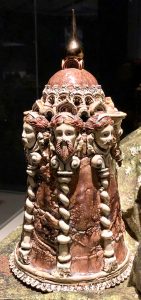
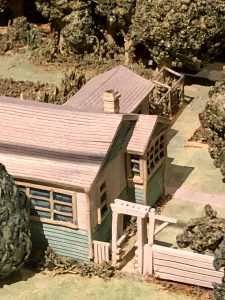
As she wound up the afternoon’s conversations Carol Mayer told us that there will be a catalogue of the show, to be published by Christmas. Reacting to the clamour for more ceramic shows in our city Carol pointed out that the museum has eight curators and ‘the whole world’ from which to select a show. But she did say that her next show will consider ‘Beauty’. What a good idea. Thank you Carol, and your big technical team for putting together this enormous, thought-provoking show.
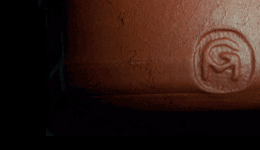
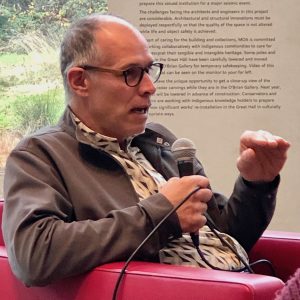
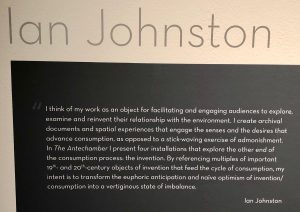
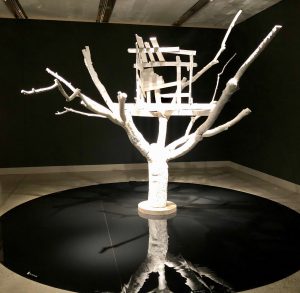
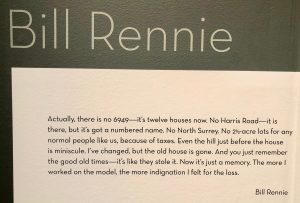
Thanks Gill for all of your excellent reporting–such a detailed and complete record of the day, and great photos. And thank you to all of the amazing artists–and Carol–and the MOA–for realizing how important it is to showcase ceramics from this region.
I appreciate your comment Amy.